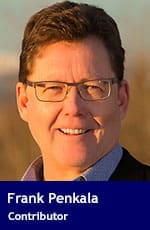 With the potential for the COVID-19 to accelerate migration from cities to rural areas, it’s time for all levels of government to stop their dithering and accelerate efforts to provide broadband and cellular wireless services to rural and remote populations.
With the potential for the COVID-19 to accelerate migration from cities to rural areas, it’s time for all levels of government to stop their dithering and accelerate efforts to provide broadband and cellular wireless services to rural and remote populations.
The infighting between provincial, federal and municipal authorities has gone on for at least two decades, with little addition of services outside of wealthier regions adjacent to major cities.
Where COVID-19 outbreaks happen in population-dense urban settings, people want to move. Many reasonably expect that Internet services, as essential communications utilities for work, health, research and entertainment, will be available wherever they resettle. And while it’s technically possible to provide such service, a lack of political will and ingrained ideological thinking are limiting progress.
With a few exceptions, community telecom services remain exclusively in the domain of the for-profit corporate sector. Henry Mintzberg, PhD, Cleghorn professor of Management Studies at McGill University, challenges such enterprise-based orthodoxy. He’s an advocate of what he calls the “plural sector” – essentially not-for-profit organizations designed to support community-led initiatives.
Where “economic costs are typically easier to measure than social costs, efficiency can actually result in an escalation of social costs,” Mintzberg wrote in a recent blog post. To cautious government administrators, this notion is counter-intuitive to the persistent belief that corporate efficiency and the requirement for profits must trump ventures focused on social progress.
Such thinking does not serve rural areas well. A 2010 broadband systems study by TaylorWarwick consultants, commissioned by the Alberta Economic Development Authority, concluded that “inefficient facilities-based competition between closed networks … led to widespread market failure outside of major urban centres.”
Nowhere in Canada has the social cost related to the absence of cellular services been more apparent than on the Eden Valley Reserve 216 of the Stoney First Nation in southwestern Alberta. Finally, prompted by a COVID-19 outbreak in the community in April, and at the prompting of Alberta Health Services, Telus Mobility installed temporary cellular service to assist healthcare providers and band council leadership in managing the local crisis.
While access to high-speed Internet remains elusive for many First Nations residents across Canada, the Stoney Nakoda community has had success with their own telecom company, developed and owned by the Bearspaw band. Hiring local residents to install and service wireless Internet facilities, the venture supports up to 800 households, claiming a coverage area of more than 15,000 square km.
Made-in-Canada technology solutions are available for high-speed Internet services. Red Deer-based Technalogix Ltd., for example, claims wireless access speeds of just less than 100 megabits per second for their digital amplifiers and transmitters, a data rate that is competitive with many cable and wired telephony-based systems. Partnering with Burnaby, B.C.-based systems integrator Advintive, the companies provide a number of systems in rural northern Alberta and British Columbia.
Another barrier to progress, though, is the policy of the federal department of Innovation, Science and Economic Development Canada (ISED). It complicates high-speed wireless access by auctioning radio frequency spectrum to leading national corporate players, whose priorities are focused on larger metropolitan areas.
In a submission to the Competition Bureau in August 2018, Cogeco Communications asserted that the “real problem area … lies in the wireless industry where barriers to entry are high due to spectrum scarcity.”
The large telecom companies that win in spectrum auction have little incentive to participate with community-based rural wireless projects. Cogeco stated that regulatory interventions are warranted to ensure cost-effective sub-licensing of spectrum and “ready access to tower sharing” on reasonable terms.
Rolling out disparate solutions across provinces is an inefficient, prohibitively costly way to proceed. With limited prospects of incremental revenue and profits for corporate interests, relying on dominant industry players in rural and remote areas has been unrealistic, given the limited revenue such expansion would create for the companies. It seems not-for-profit, community-driven ventures are more likely to succeed in the short term.
If the pandemic takes two to three years to resolve, we can expect to see more people deciding to move from higher density population areas to rural and remote centres. That’s why it’s essential that provincial and federal governments work together with municipalities, towns and First Nations communities to optimize and standardize high-speed wireless Internet access.
Frank Penkala is a member of the Alberta Party shadow cabinet (Service Alberta), and operates a consulting and financial practice as president of LeaseDirect Canada Corp. He spent 10 years in the wireless systems business, including roles in product management focused on rural access solutions.
The views, opinions and positions expressed by columnists and contributors are the author’s alone. They do not inherently or expressly reflect the views, opinions and/or positions of our publication.


